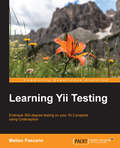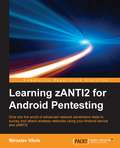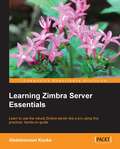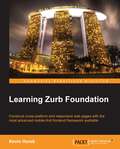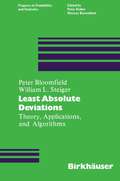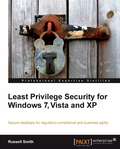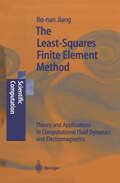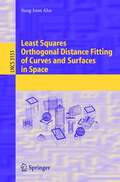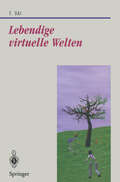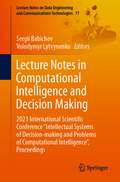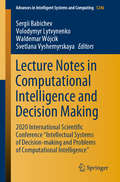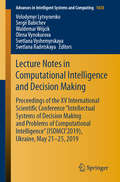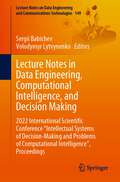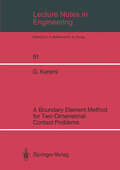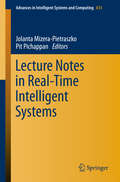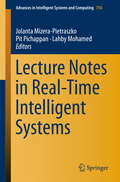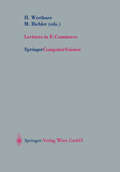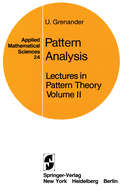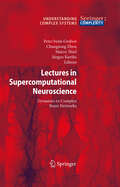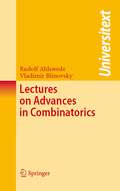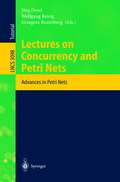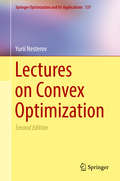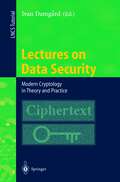- Table View
- List View
Learning Yii Testing
by Matteo PescarinDevelopers who have a solid pre-existing knowledge of Yii's core concepts will find this book an ideal introduction to learning to write tests using Yii 2's tools. You'll learn to create faster and more reliable applications with less time and effort.
Learning zANTI2 for Android Pentesting
by Miroslav VitulaDive into the world of advanced network penetration tests to survey and attack wireless networks using your Android device and zANTI2 About This Book • Understand the basics of wireless penetration testing and its importance • Learn the techniques to perform penetration testing on your wireless networks, such as scanning, detecting vulnerabilities in your victim, and then attacking • This simple and intriguing guide takes a step-by-step approach that will help you get to grips with network pentesting using just your Android device and zANTI2 Who This Book Is For The book is intended for those who want to know more about network penetration tests and have no prior experience, as well as for those who are experienced in network systems and are curious to discover more about this topic. Since zANTI2 features an extremely intuitive and easy to control interface, it doesn't require any special skills. What You Will Learn • Understand the importance of penetration testing throughout systems • Take a run through zANTI2's interface and understand the requirements to the app • Perform advanced scanning/network mapping and discover the various types of scans used on a target • Discover and remotely connect to open ports on a target, thereby accessing a target's files and folders remotely • Detect vulnerabilities on a target, learn how to remotely exploit them, and discover ways to protect your self from these exploits • Understand what an MITM attack is and how it works, and apply this knowledge to perform attacks on network targets • Learn to hijack sessions, identify victim's passwords, replace images on websites, inject scripts, and more • Use this knowledge to protect yourself from all of the attacks you will study In Detail A penetration test is one of the most important methods to secure a network or any individual machine. Having knowledge of these methods can enable a user to protect himself/herself from any kinds of attacks. Penetration tests can also be used to discover flaws or loop holes in one's security system, which if not fixed, can be exploited by an unwanted entity. This book starts off with an introduction to what penetration testing is, and how it can be performed on Android using zANTI2. Once you are aware of the basics, we move on to teach you the different types of scans that can be performed to search for targets. You will then learn how to connect to open ports and intrude into an unsecured computer. From here you will explore vulnerabilities and their usage, including ShellShock and SSL Poodle vulnerability. When connected to an open network, a user is susceptible to password and session hijacking, and a number of other cyber attacks. The book therefore ends with one of the main aspects of cyber security: the Man in the Middle attack. You will get to know everything about the MITM attack, how it works, and how one can be protected against it. Style and approach The book follows a step-by-step approach with each of the parts explained in an easy-to-follow style. Most of the methods showcased can be tried out immediately on almost any network.
Learning Zimbra Server Essentials
by Abdelmonam KoukaA standard tutorial approach which will guide the readers on all of the intricacies of the Zimbra Server.If you are any kind of Zimbra user, this book will be useful for you, from newbies to experts who would like to learn how to setup a Zimbra server. If you are an IT administrator or consultant who is exploring the idea of adopting, or have already adopted Zimbra as your mail server, then this book is for you. No prior knowledge of Zimbra is required.
Learning Zurb Foundation
by Kevin HorekIf you are a web designer, developer, or anyone who is interested in building responsive websites, then this book is a must-have. Basic knowledge of CSS, HTML, and JavaScript is required.
Least Absolute Deviations: Theory, Applications and Algorithms (Progress in Probability #6)
by P- Bloomfield SteigerLeast squares is probably the best known method for fitting linear models and by far the most widely used. Surprisingly, the discrete L 1 analogue, least absolute deviations (LAD) seems to have been considered first. Possibly the LAD criterion was forced into the background because of the com putational difficulties associated with it. Recently there has been a resurgence of interest in LAD. It was spurred on by work that has resulted in efficient al gorithms for obtaining LAD fits. Another stimulus came from robust statistics. LAD estimates resist undue effects from a feyv, large errors. Therefore. in addition to being robust, they also make good starting points for other iterative, robust procedures. The LAD criterion has great utility. LAD fits are optimal for linear regressions where the errors are double exponential. However they also have excellent properties well outside this narrow context. In addition they are useful in other linear situations such as time series and multivariate data analysis. Finally, LAD fitting embodies a set of ideas that is important in linear optimization theory and numerical analysis. viii PREFACE In this monograph we will present a unified treatment of the role of LAD techniques in several domains. Some of the material has appeared in recent journal papers and some of it is new. This presentation is organized in the following way. There are three parts, one for Theory, one for Applicatior.s and one for Algorithms.
Least Privilege Security for Windows 7, Vista and XP: Implement Efficient System Security By Assigning Permissions Effectively
by Russell SmithThis practical handbook has detailed step-by-step instructions for implementing Least Privilege Security and related management technologies. It has solutions to the most common technical challenges and Microsoft best practice advice. It also covers techniques for managing Least Privilege on the desktop. This book is for System Administrators or desktop support staff who want to implement Least Privilege Security on Windows systems.
The Least-Squares Finite Element Method: Theory and Applications in Computational Fluid Dynamics and Electromagnetics (Scientific Computation)
by Bo-nan JiangThis is the first monograph on the subject, providing a comprehensive introduction to the LSFEM method for numerical solution of PDEs. LSFEM is simple, efficient and robust, and can solve a wide range of problems in fluid dynamics and electromagnetics.
Least Squares Orthogonal Distance Fitting of Curves and Surfaces in Space (Lecture Notes in Computer Science #3151)
by Sung Joon AhnDue to the continuing progress of sensor technology, the availability of 3-D cameras is already foreseeable. These cameras are capable of generating a large set of measurement points within a very short time. There are a variety of 3-D camera applications in the fields of robotics, rapid product development and digital factories. In order to not only visualize the point cloud but also to recognize 3-D object models from the point cloud and then further process them in CAD systems, efficient and stable algorithms for 3-D information processing are required. For the automatic segmentation and recognition of such geometric primitives as plane, sphere, cylinder, cone and torus in a 3-D point cloud, efficient software has recently been developed at the Fraunhofer IPA by Sung Joon Ahn. This book describes in detail the complete set of ‘best-fit’ algorithms for general curves and surfaces in space which are employed in the Fraunhofer software.
Lebendige virtuelle Welten: Physikalisch-basierte Modelle in Computeranimation und virtueller Realität (Beiträge zur Graphischen Datenverarbeitung)
by Fan DaiIn Computeranimation und virtueller Realität geht es neben optischer Darstellungsqualität auch darum, dynamische Änderungen (Bewegung, Verformung, etc.) realistisch wiederzugeben. Das Buch liefert einen Überblick über die Methoden von Modellierung und Simulation dynamischer Prozesse in virtuellen, computergenerierten Welten. Das umfaßt die Dynamik von Mehrkörpersystemen, kinematischen Strukturen und verformbaren Objekten bis hin zu virtuellen "Lebewesen". Dabei werden neben den technischen Grundkonzepten aktuelle Ansätze aus der Forschung dargestellt.
Lecture Notes in Computational Intelligence and Decision Making: 2021 International Scientific Conference "Intellectual Systems of Decision-making and Problems of Computational Intelligence”, Proceedings (Lecture Notes on Data Engineering and Communications Technologies #77)
by Sergii Babichev Volodymyr LytvynenkoThis book is devoted to current problems of artificial and computational intelligence including decision-making systems. Collecting, analysis, and processing information are the current directions of modern computer science. Development of new modern information and computer technologies for data analysis and processing in various fields of data mining and machine learning creates the conditions for increasing effectiveness of the information processing by both the decrease of time and the increase of accuracy of the data processing. The book contains of 54 science papers which include the results of research concerning the current directions in the fields of data mining, machine learning, and decision making. The papers are divided in terms of their topic into three sections. The first section "Analysis and Modeling of Complex Systems and Processes" contains of 26 papers, and the second section "Theoretical and Applied Aspects of Decision-Making Systems" contains of 13 papers. There are 15 papers in the third section "Computational Intelligence and Inductive Modeling". The book is focused to scientists and developers in the fields of data mining, machine learning and decision-making systems.
Lecture Notes in Computational Intelligence and Decision Making: 2020 International Scientific Conference "Intellectual Systems of Decision-making and Problems of Computational Intelligence” (Advances in Intelligent Systems and Computing #1246)
by Sergii Babichev Volodymyr Lytvynenko Waldemar Wójcik Svetlana VyshemyrskayaThis book includes 46 scientific papers presented at the conference and reflecting the latest research in the fields of data mining, machine learning and decision-making. The international scientific conference “Intellectual Systems of Decision-Making and Problems of Computational Intelligence” was held in the Kherson region, Ukraine, from May 25 to 29, 2020. The papers are divided into three sections: “Analysis and Modeling of Complex Systems and Processes,” “Theoretical and Applied Aspects of Decision-Making Systems” and “Computational Intelligence and Inductive Modeling.” The book will be of interest to scientists and developers specialized in the fields of data mining, machine learning and decision-making systems.
Lecture Notes in Computational Intelligence and Decision Making: Proceedings of the XV International Scientific Conference “Intellectual Systems of Decision Making and Problems of Computational Intelligence” (ISDMCI'2019), Ukraine, May 21–25, 2019 (Advances in Intelligent Systems and Computing #1020)
by Volodymyr Lytvynenko Sergii Babichev Waldemar Wójcik Olena Vynokurova Svetlana Vyshemyrskaya Svetlana RadetskayaInformation and computer technologies for data analysis and processing in various fields of data mining and machine learning generates the conditions for increasing the effectiveness of information processing by making it faster and more accurate. The book includes 49 scientific papers presenting the latest research in the fields of data mining, machine learning and decision-making. Divided into three sections: “Analysis and Modeling of Complex Systems and Processes”; “Theoretical and Applied Aspects of Decision-Making Systems”; and “Computational Intelligence and Inductive Modeling”, the book is of interest to scientists and developers in the field.
Lecture Notes in Data Engineering, Computational Intelligence, and Decision Making: 2022 International Scientific Conference "Intellectual Systems of Decision-Making and Problems of Computational Intelligence”, Proceedings (Lecture Notes on Data Engineering and Communications Technologies #149)
by Sergii Babichev Volodymyr LytvynenkoThis book contains of 39 scientific papers which include the results of research regarding the current directions in the fields of data mining, machine learning and decision-making. This book is devoted to current problems of artificial and computational intelligence including decision-making systems. Collecting, analysis and processing information are the current directions of modern computer science. Development of new modern information and computer technologies for data analysis and processing in various fields of data mining and machine learning create the conditions for increasing effectiveness of the information processing by both the decrease of time and the increase of accuracy of the data processing.The papers are divided in terms of their topic into three sections. The first section "Analysis and Modeling of Hybrid Systems and Processes" contains of 11 papers, and the second section "Theoretical and Applied Aspects of Decision-Making Systems" contains of 11 ones too. There are 17 papers in the third section "Data Engineering, Computational Intelligence and Inductive Modeling". The book is focused to scientists and developers in the fields of data mining, machine learning and decision-making systems.
Lecture Notes in Engineering: A Boundary Element Method for Two-Dimensional Contact Problems (Lecture Notes in Engineering #51)
by Ghodratollah KaramiThe Boundary Element Method (BEM) has been established as a powerful numerical tool for the analysis of continua in recent years. The method is based on an attempt to transfer the governing differential equations into integral equations over the boundary. Thus, the discretization scheme or the intro duction of any approximations must be done over the boundary. This book presents a BEM for two-dimensional elastic, thermo -elastic and body-force contact problems. The formulation is implemented for the general case of contact with various fric tional conditions. The analysis is limited to linear elasto statics and small strain theory. Following a review of the basic nature of contact problems, the analytical basis of the direct formulation of the BEM method is described. The numerical implementation employs three-noded isoparametric line elements for the representa tion of the boundary of the bodies in contact. Opposite nodal points in equi-Iength element-pairs are defined on the two surfaces in the area which is expected to come into contact under an increasing load. The use of appropriate contact IV conditions enables the integral equations for the two bodies to be coupled together. To find the proper contact dimensions and the contact load a combined incremental and iterative approach is utilised. With this approach, the loads are applied progressively, and the sliding and adhering portion of the contact region is established for each load increment using an iterative procedure. A coulomb type of friction law is assumed.
Lecture Notes in Quantum Chemistry: European Summer School in Quantum Chemistry (Lecture Notes in Chemistry #58)
by Bjö O. Roos"Quantum Chemistry" is the course material of a European Summer School in Quantum Chemistry, organized by Bj|rn O. Roos. It consists of lectures by outstanding scientists who participate in the education of students and young scientists. The book has a wider appeal as additional reading for University courses. Contents: P.-A. Malmquist: Mathematical Tools in Quantum Chemistry J. Olsen: The Method of Second Quantization P.R. Taylor: Molecular Symmetry and Quantum Chemistry B.O. Roos: The Multiconfigurational (MC) Self-Consistent Field (SCF) Theory P.E.M. Siegbahn: The Configuration Interaction Method T. Helgaker: Optimization of Minima and Saddle Points P.R. Taylor: Accurate Calculations and Calibration U. Wahlgren: Effective Core Potential Method
Lecture Notes in Real-Time Intelligent Systems (Advances in Intelligent Systems and Computing #613)
by Jolanta Mizera-Pietraszko Pit PichappanIntelligent computing refers greatly to artificial intelligence with the aim at making computer to act as a human. This newly developed area of real-time intelligent computing integrates the aspect of dynamic environments with the human intelligence. This book presents a comprehensive practical and easy to read account which describes current state-of-the art in designing and implementing real-time intelligent computing to robotics, alert systems, IoT, remote access control, multi-agent systems, networking, mobile smart systems, crowd sourcing, broadband systems, cloud computing, streaming data and many other applications areas. The solutions discussed in this book will encourage the researchers and IT professional to put the methods into their practice.
Lecture Notes in Real-Time Intelligent Systems (Advances in Intelligent Systems and Computing #756)
by Jolanta Mizera-Pietraszko Pit Pichappan Lahby MohamedThe second volume of the book series highlights works presented at the 2nd International Conference on Real Time Intelligent Systems, held in Casablanca on October 18-20, 2017. The book offers a comprehensive, practical review of the state-of-the-art in designing and implementing real-time intelligent computing for the areas within the conference’s scope such as robotics, intelligent alert systems, IoT, remote access control, multi-agent systems, networking, mobile smart systems, crowdsourcing, broadband systems, cloud computing, streaming data and many other applications. Research in real-time computing supports decision making in dynamic environments. Some examples include ABS, FBW flight control, automatic air-conditioning, etc. Intelligent computing relies heavily on artificial intelligence (AI) to make computers act for humans. The authors are confident that the solutions discussed in this book will provide a unique source of information and inspiration for researchers working in AI, distributed coding algorithms or smart services and platforms, and for IT professionals, who can integrate the proposed methods into their practice.
Lectures in E-Commerce
by MartinBichler Hannes WerthnerAlthough only a few years old, electronic commerce offers new ways of doing business that no business can afford to ignore. This book is a collection of selected contributions from renowned researchers who specialize in the various facets of electronic commerce, namely economics, finance, information technology, and education. The basic goal is to give an overview of some of the most relevant topics in E-Commerce.
Lectures in Pattern Theory: Volume 2: Pattern Analysis (Applied Mathematical Sciences #24)
by U. GrenanderMany persons have helped the author with comments and corrections, and I would like to mention D. E. McClure, I. Frolow, J. Silverstein, D. Town, and especially W. Freiberger for his helpful suggestions and encouragement. The work in Chapters 6 and 7 has been influenced and stimulated by discussions with other members of the Center for Neural Sciences, especially with L. Cooper and H. Kucera. I would like to thank F. John, J. P. LaSalle, L. Sirovich, and G. Whitham for accepting the manuscript for the series Applied Mathematical Sciences published by Springer-Verlag. This research project has been supported by the Division of Mathematical and Computer Sciences of the National Science Foundation and (the work on language abduction, pattern processors, and patterns in program behavior) by the Information Systems Program of the Office of Naval Research. I greatly appreciate the understanding and positive interest shown by John Pasta, Kent Curtiss, Bruce Barnes, Sally Sedelov vi PREFACE and Bob Agins of the Foundation, and by Marvin Denicoff of the Office of Naval Research. I am indebted to Mrs. E. Fonseca for her untiring and careful preparation of the manuscript, to Miss E. Addison for her skillful help with the many diagrams, and to S.V. Spinacci for the final typing. I gratefully acknowledge permission to reproduce figures, as mentioned in the text, from Cambridge University Press and from Hayden Book Company. Also, to Professor J. Carbury for permission to use his illustration on page 704.
Lectures in Supercomputational Neuroscience: Dynamics in Complex Brain Networks (Understanding Complex Systems)
by Changsong Zhou Marco Thiel Jürgen Kurths Peter GrabenWritten from the physicist’s perspective, this book introduces computational neuroscience with in-depth contributions by system neuroscientists. The authors set forth a conceptual model for complex networks of neurons that incorporates important features of the brain. The computational implementation on supercomputers, discussed in detail, enables you to adapt the algorithm for your own research. Worked-out examples of applications are provided.
Lectures on Advances in Combinatorics (Universitext)
by Rudolf Ahlswede Vladimir BlinovskyThe lectures concentrate on highlights in Combinatorial (ChaptersII and III) and Number Theoretical (ChapterIV) Extremal Theory, in particular on the solution of famous problems which were open for many decades. However, the organization of the lectures in six chapters does neither follow the historic developments nor the connections between ideas in several cases. With the speci?ed auxiliary results in ChapterI on Probability Theory, Graph Theory, etc., all chapters can be read and taught independently of one another. In addition to the 16 lectures organized in 6 chapters of the main part of the book, there is supplementary material for most of them in the Appendix. In parti- lar, there are applications and further exercises, research problems, conjectures, and even research programs. The following books and reports [B97], [ACDKPSWZ00], [A01], and [ABCABDM06], mostly of the authors, are frequently cited in this book, especially in the Appendix, and we therefore mark them by short labels as [B], [N], [E], and [G]. We emphasize that there are also “Exercises” in [B], a “Problem Section” with contributions by several authors on pages 1063–1105 of [G], which are often of a combinatorial nature, and “Problems and Conjectures” on pages 172–173 of [E].
Lectures on Concurrency and Petri Nets: Advances in Petri Nets (Lecture Notes in Computer Science #3098)
by Jörg Desel Wolfgang Reisig Grzegorz RozenbergLectures on Convex Optimization: A Basic Course (Applied Optimization Ser. #87)
by Yurii NesterovThis book provides a comprehensive, modern introduction to convex optimization, a field that is becoming increasingly important in applied mathematics, economics and finance, engineering, and computer science, notably in data science and machine learning. Written by a leading expert in the field, this book includes recent advances in the algorithmic theory of convex optimization, naturally complementing the existing literature. It contains a unified and rigorous presentation of the acceleration techniques for minimization schemes of first- and second-order. It provides readers with a full treatment of the smoothing technique, which has tremendously extended the abilities of gradient-type methods. Several powerful approaches in structural optimization, including optimization in relative scale and polynomial-time interior-point methods, are also discussed in detail. Researchers in theoretical optimization as well as professionals working on optimization problems will find this book very useful. It presents many successful examples of how to develop very fast specialized minimization algorithms. Based on the author’s lectures, it can naturally serve as the basis for introductory and advanced courses in convex optimization for students in engineering, economics, computer science and mathematics.
